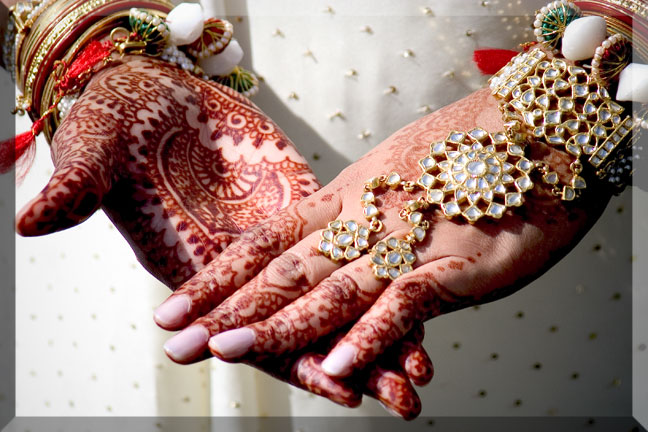Pre Wedding Tamil Rituals
Here is provided information about pre wedding Tamil rituals:
Panda Kaal Muhurtham Custom
To seek the blessings of divine God, Panda Kaal Muhurtham custom is performed. Basically, a small ritual is carried out one day before marriage, in which both the families offer prayers to the Lord. This is done to ensure that the matrimonial preparations proceed smoothly.
Receiving the Groom
When the groom's family reaches the wedding venue on the morning of one day before the wedding, they are greeted by the bride's family. They are offered a tray containing flowers, paan supari, fruits and mishri. In their welcome, rosewater is sprinkled on them.
The bride's brother adorns the groom's forehead by applying tilak made from the mixture of sandalwood paste and kumkum. He also puts a garland around the groom's neck. After that, the bride's mother serves a delicious dessert prepared from condensed milk. Thereafter, aarti is performed by an elder female member of the bride's family. To ward off the evil eye, a coconut is broken on the ground.
Vratham & Pallikai Thellichal Ceremony
Vratham takes place one day before the wedding. It is performed by the bride as well as groom's family. It is during the performance of this ritual that Vedic hymns are recited by all present. It is conducted by the priest (Vaadyar). This ritual is basically performed to invoke the blessings of ancestors and divine God.
Pallikai Thellichal ceremony is also held a day before the wedding. It involves the filling of clay pots with nine varieties of grains. Married ladies pour water from both the sides. Traditional songs are sung. When the grains are kept in water for a day or two, they sprout. Then the clay pots are kept inside the pond, so that the fishes can feed on the grains and give their blessings to the newly wedded couple.
Naandi & Jaanavaasam
In the Naandi ceremony, Brahmins are honored by offering them gifts and sweets. They are specially invited and the families seek their blessings, to ensure that the marriage proceedings are smooth.
Jaanavaasam tradition doesn't have much of relevance in today's times. The groom boards a beautifully decorated car and is accompanied by a large marriage procession of close friends and relatives. Professional musicians are called upon to play the traditional wedding songs. Fireworks form part of marriage celebrations. The bride's brother garlands the bridegroom and gives him a warm welcome at the entrance of wedding hall.
Nicchiyadharatham
The bride's parents offer prayers to Lord Ganesha, who is believed to remove all obstacles. A puja is conducted in the presence of priest. The groom's family presents a new sari to the bride. Her forehead is adorned with a tilak made from chandan and kumkum and the end part of her sari is filled with fruits, paan-supari, turmeric, kumkum and coconut. Also a flower garland is tied around her waist. Aarti is done for the bride.
Reading of Lagna Pathirigai
The priest has an important role to play in the reading of Lagna Pathirigai. He also announces other details related to marriage like the muhurtam and wedding venue. Thereafter, mouthwatering lavish dinner is served.






